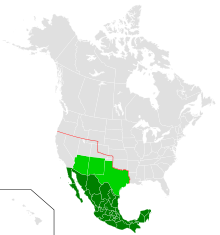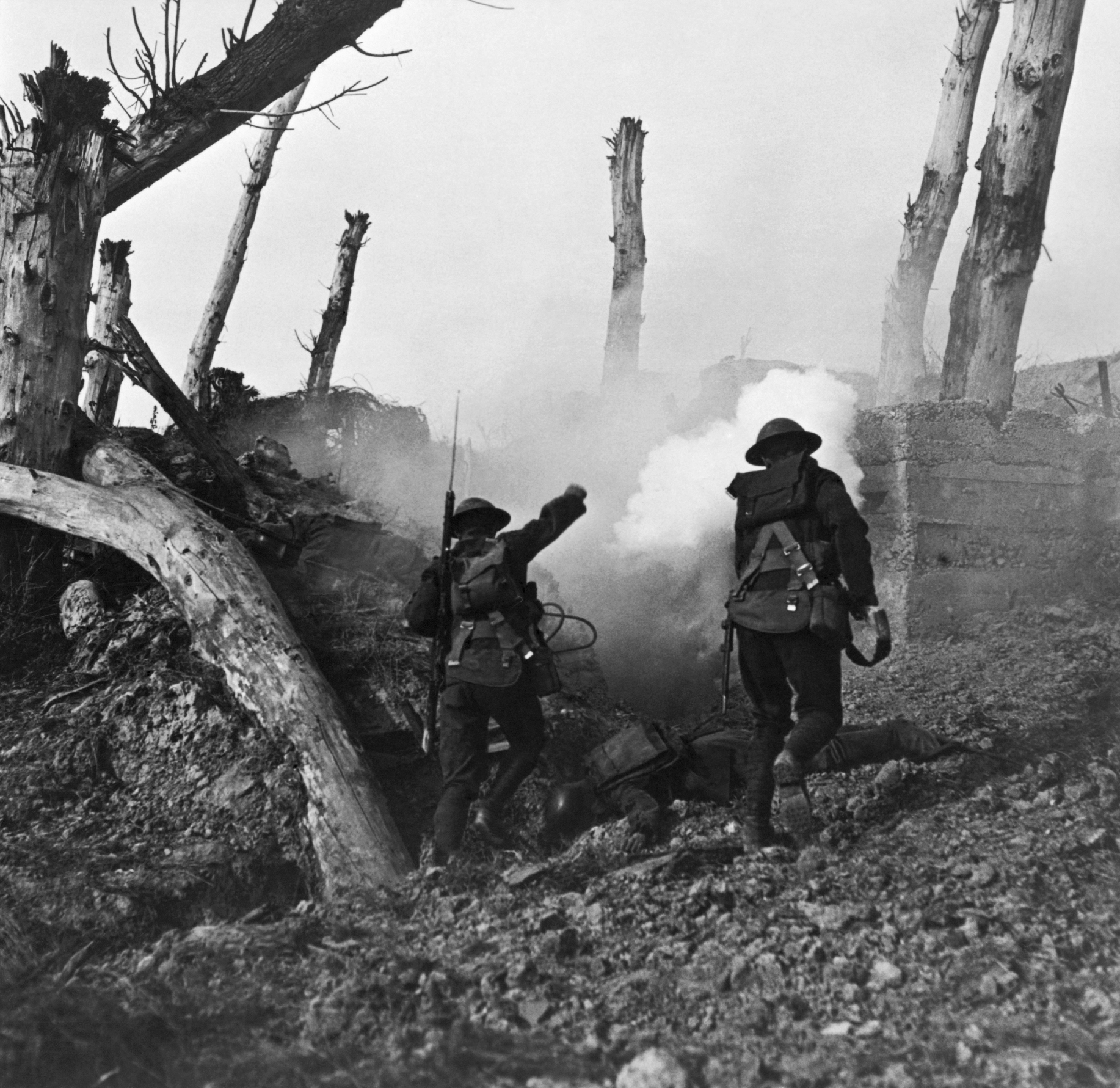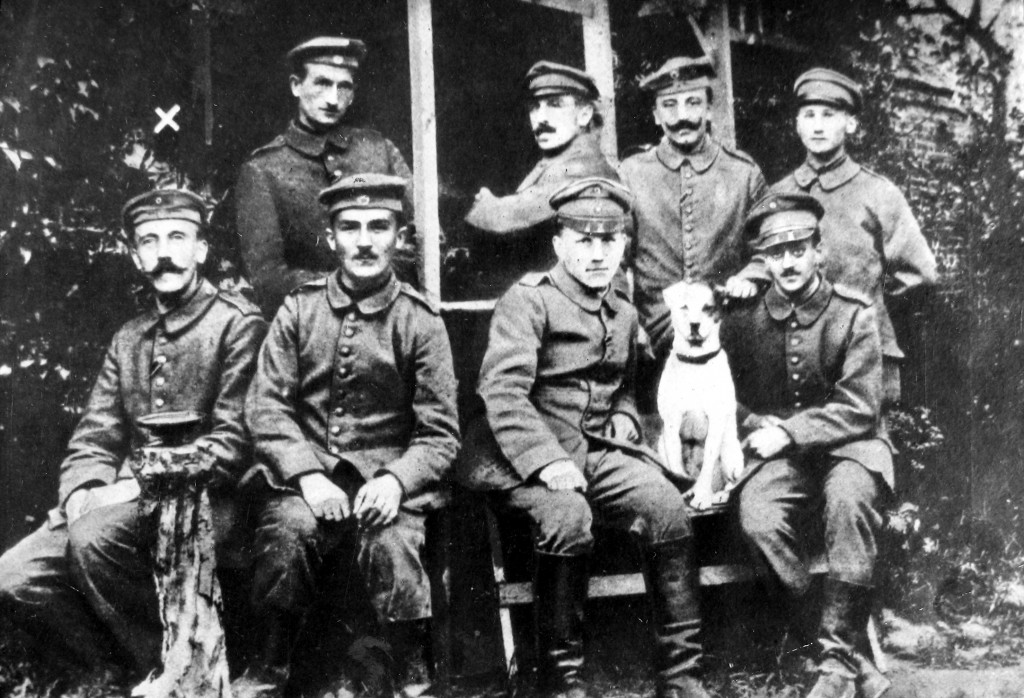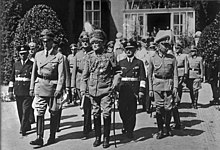
1918. The Great War has been dragging on for nearly four years at this point. The Americans, after the Zimmerman Telegram, which asked Mexico to join the side of the war on the Germans and they would get to reclaim lands they lost in the American-Mexican War, caused them to join. But the primary reason they joined was the Kaiser resuming unrestricted submarine warfare on merchant and passenger ships of any nation. Declaring war in April 1917, despite President Woodrow Wilson’s promise to keep America out of the war, served as the primary turning point in the war. However, American troops wouldn’t reach European shores until 1918.



Before American troops arrived in Europe, Germany appeared to have the upper hand in Europe. The Bolshevik Revolution in Russia led to the collapse of the Russian Empire. The subsequent treaty of Brest-Litovsk allowed Germany to move troops Westward to crush the remaining Allies finally. If Germany won a decisive victory before the Americans arrived or a Communist revolution broke out among discontent and war-weary citizens at home, they would have to launch one final, last brutal offensive to crush them. Therefore on March 21, 1918, Germany launched its latest, major desperate offensive to win. This was known as the Spring Offensive and was incredibly successful at first, given how for the majority of the war, it was a miracle if anyone moved a few kilometers.

But thanks to stubborn Allied resistance and the straining of supply lines, the offensive was halted, not without thousands more dying or being injured.
Kaiser Wilhelm the II, at this point in the war, was on his way out. Discontent among the German people and successful Allied propaganda efforts left him marginalized at home and internationally. He no longer held any real power, with it being all in the hands of his generals.
To see how the Spring Offensive was going, the Kaiser moved closer to the front lines, only a few kilometers away near the Belgian front. But the Allies had no idea he was this close.
It wasn’t until a specific German POW spilled the beans after being captured. While being interrogated, an unnamed German soldier said that the Kaiser was staying at a nearby cottage in Trelon. At first, the Allies and the French didn’t believe this, but they had excellent sources verifying it.
to quote an article from the Independent, this is how genuinely reliable the sources of British and French intelligence were:
“British intelligence officers in Amsterdam in neutral Holland had frequent contact with an underground espionage network in German-occupied Belgium and northern France called La Dame Blanche (The White Lady). It is known that the LDB had agents in the Trelon area – so it is likely that further information on the Kaiser’s movements was passed on (via Amsterdam) to the British intelligence HQ in London. However, there was always a time delay – so information was always slightly outdated.“
To the shock of French intelligence, not only was the rumor true, but it was the cottage of an assistant of Phillippe Petain, the famous French general and later ruler of Vichy France.

It was quickly decided to plan a decisive strike to kill the Kaiser and end the war. It was hoped by killing the Kaiser, they deal a morale blow so severe to the German people and war machine they would have no choice but to surrender.
The problem with the sources they were verifying the info from ( local spies and other informants) is that the information was usually a couple of days old at that point. They were able to reliably track the movements of the Kaiser and where he went every few days. However, if the Kaiser had left the cottage, they would just be bombing some poor assistant’s empty cottage.
With this in mind, the decision to insert a tactical team, along with an airstrike by the Royal Air Force, was hastened greatly. If they managed to kill the Kaiser, the war could be over. With the request being approved by the assistant to bomb the cottage, the plan was sprung into action in May 1918.
They only had one shot at this, and if it failed, it would alert the Kaiser that the Allies knew where he kept his base of operations. This would also force him to move somewhere else safer.
The Allies also learned from intelligence that the Kaiser kept his Imperial train nearby for safety if he had to make a run for it.
In late May, the Battle of Chemin des Dames occurred, where the Germans captured 45,000 Allied troops. This made them even more afraid that the Germans would win the war. It was under these unfortunate circumstances that the operation was finally launched.
On June 2, 1918 at 4:50 AM, 12 RAF De Havilland-4 bombers took from Ruisseauville Airfield (near Boulogne-sur-Mer). At 5:25 AM, they reached the Kaiser’s residence and dropped up to a dozen 50 KG bombs, along with some 24 11 Kg ones. Thanks to fog, the pilots could not see their targets correctly.
Not only had they missed their targets, but they had also missed the Kaiser by 19 hours. He left earlier the previous days to congratulate his generals at the front. The cottage itself was left relatively undamaged. The second bombing raid that occurred on the Imperial train also failed in its mission to kill the Kaiser as he was safe 25 miles away from it. They punched 800 pounds of bullets into it, killing an unknown amount of people.
The Kaiser was not in a good mood when he arrived to greet his generals, as a German advance had been repulsed. Covered in dust and grime, he returned to a different location away from the cottage.
Also, to the utter confusion of these attempted raids, none of his aides bothered to tell him about it, even after four days. He was moved to a different location whenever he learned about it and was furious that his aides hadn’t told him. In the diary of one of his senior aides, they reflected on how dangerous the location was and that they should move. But that’s all was said about it.
We also all know the rest of history after this point. On November 11, 1918, a ceasefire ended the First World War. The Entente and the Central Powers were at peace. With the failure of the Spring Offensive and with new American troops providing more steam and the naval blockade of Germany, the German economy crashed. This forced them to sign a ceasefire out of fear of an invasion of Germany.
In 1919, Kaiser Wilhelm II abdicated after a popular revolution occurred against his government. He did this out of fear of a communist revolution and when the military turned against him. With the signing of the Treaty of Versailles and the rise of the Weimar Republic, Imperial Germany was dead. Thanks to the punishing treaty, reparation payments, limiting of the Navy and the army, loss of colonies and land, the inflation crisis, and finally, the Great Depression, caused the rise of Adolf Hitler and the Nazis.
The Kaiser himself, with his family, fled into exile into the Netherlands and was permitted to settle in Doorn, despite the significant protests of the Entente who wanted him tried for war crimes. He spent the last twenty-some years of his life gardening, cutting down trees ( he cut 40,000 trees supposedly, and this was given out to poor residents), taking up hunting and archaeology in Corfu. He fled with over 60 rail cars of paintings, furniture, cars, and gold.

With the rise of the Nazis in the late 1920s and early 1930s, he hoped their success would allow him to return to become the monarch in Germany again. He hosted Hermann Göring, but Hilter wanted nothing to do with him. Being an Imperial Germany army veteran, he held nothing but contempt for the former Kaiser, as he blamed all Germany’s current problems and their humiliating defeat in World War I on him.

The Kaiser also grew to distrust the Nazis after the Night of the Long Knives, saying:
We have ceased to live under the rule of law, and everyone must be prepared for the possibility that the Nazis will push their way in and put them up against the wall!
He also was appalled by the Kristallnacht and the starting of Jewish Pogroms, despite holding very anti-Semitic views himself.
His view softened with the conquest of Poland and the start of the Second World War. Declaring in 1940, the House of Hohenzollern was loyal to Nazi Germany. He noted that 9 of his sons and grandsons were currently serving in the German army at the time. Hitler later banned the Kaiser’s family from serving out of fear of them becoming a rallying point against him. With the conquest of the Netherlands, the Low Countries, and France in May 1940, he sent a telegram of congratulations to Hitler.
“My Fuhrer, I congratulate you and hope that under your marvelous leadership, the German monarchy will be restored completely.“
Hilter laughed when he received it, calling the Kaiser an idiot. He later sent more telegraphs, greatly admiring what Hilter had achieved in such a short time during the opening stages of the war.

With the conquest of the Netherlands, Churchhill offered Wilhem asylum in the U.K, as he was a cousin of King George. He declined, choosing to live out the rest of his days at his estate in Doorn. With the conquest of the Netherlands, he ultimately retired from public life.
Hitler left the Kaiser alone on his estate until he died at 82 in 1941. The Kaiser wished to be buried on his estate, and his body was not to be moved back to Germany until the monarchy was restored. Hitler wanted him to have a state funeral back in Germany for propaganda purposes, but he grudgingly respected his wishes. He did go against the rest of Wilhem’s wishes not to have Nazi symbolism at his funeral.

Germany, today is a democratic republic and the fourth-largest economy in the world and the largest in the European Union. The monarchy was never to return.


The attempt on the Kaiser’s life was only disclosed four years ago in 2018, with the release of a book detailing it from released British and French records from that period. This was more than 100 years after this. There are lingering questions about why the raid took place. Was it Allied desperation?
They had tried in the times of Napoleon to kill him and as recently as the 1940s with Hitler. These many questions remain unanswered.
The legacy of the First World War and Kaiser Wihlem the II still affect us today. It led to the rise of the Nazis, World War II, the Soviet Union, and the Cold War. We still don’t know the legacy of these conflicts upon our world and history fully. Only time will tell.